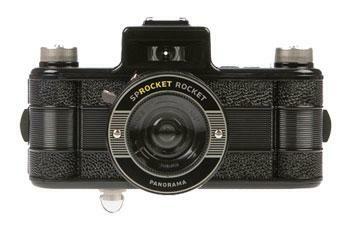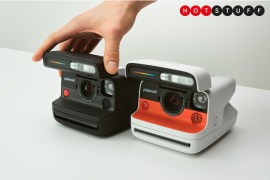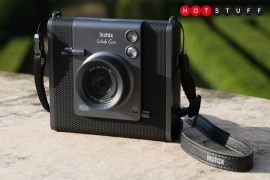Lomography Sprocket Rocket review
Lomography's super-wide film camera rewinds film as well as time

The latest offering from lo-fi-loving retromongers Lomography, the Sprocket Rocket is a 35mm camera with three standout features: a panoramic wide angle lens, a rewind knob and the ability to deliver exposures bedecked with sprocket holes at the top and bottom.
The lens is 30mm, has two focus modes (0.6m to 1m and 1m to infinity) and two apertures (one for sunny days, one for cloudy conditions). Its extra-wide nature means that it takes up two normal frames on a roll of film.
Fisheye panoramas
That means you only get 18 shots out of a 36 exposure film, but the panoramic effect – which includes some almost fisheye-esque distortion towards the edges – is undeniably cool. You can, of course, also flip the Sprocket Rocket 90 degrees and shoot a super-tall portrait.
The rewind knob lets you go back to a previous shot, in order to perform the classic Lomo trick of double exposure: taking one shot over the top of another to produce a nifty layered effect. Actually, you can do this just by forgetting to wind on, which is easily done. There’s no accurate way of knowing where you are on the film when you rewind though, so that’s rather more random.
Sprocket holes
Finally, there’s the option to have visible sprocket holes in your shots. To do this you simply remove the frame mask from inside the camera. Otherwise you can leave it in to have the image constrained to the normal vertical limits of 35mm film.
Lomo cameras aren’t known for their ease of use – their unpredictability is part of the charm – but even so the Sprocket Rocket is one of the less forgiving in the diverse range. It’s best suited to very bright light and ISO 800 film. We gave it a thorough workout in sunny Spain, and even then it struggled to expose anything on ISO 200 and 400 film.
However, there is a hotshoe to allow you to add a flash, and the shutter can be held open for long exposures. There’s no lock on the shutter, but we found using a small elastic hairband to tether it to the aperture switch worked well for night shots.
Plastic build
As with most Lomography cameras, the Sprocket Rocket feels lightweight and cheap. It’s made mostly of plastic, including the lens itself, and lacks the reassuring sturdiness of even entry-level digital cameras. It’s what we’ve come to expect, but £79 is still a lot to ask for this sort of build quality.
If you’re looking for a camera that accurately captures the outside world, this isn’t it, but for an alternative, more creative take on photography the Sprocket Rocket is lots of fun. Check out the Flickr group to see what it can do.



